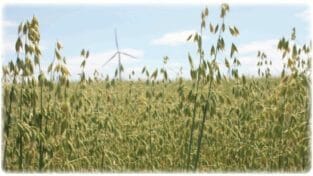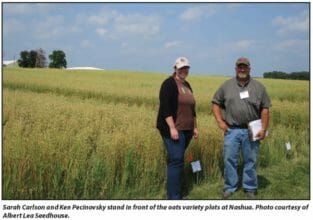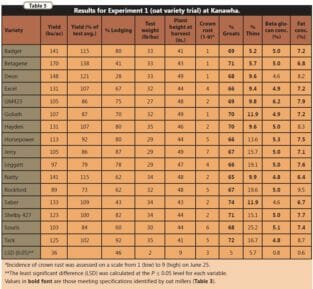Bringing oats back to Iowa
Oats were grown on 7 million acres in Iowa until the 1960s. Across much of the northern Cornbelt small grains like oats were once normal crops on the landscape. Oats provide farmers crop diversity allowing for reduced dependence on the markets of just corn and soybean. Oats improve soil health and reduce nutrient and soil loss from farm fields during the most vulnerable times of the year. Oats are good sources of animal feed and can provide straw for bedding. Oats also allow time for growing a nitrogen-fixing legume crop which can help grow corn with less purchased fertilizer or apply manure during the summer months to a high carbon straw crop.  PFI farmers and others have long lamented the lack of oats and other small grains on Iowa’s landscape. We have a history with this crop in Iowa. Whenever I hear farmers talk about growing oats when they were younger there is an emotional, visceral response in their voice. Given all this we need to make it work again in Iowa. To help get that started PFI, with funding from General Mills, Grain Millers, Albert Lea Seedhouse and the Sustainable Food Lab, worked with Iowa State University to evaluate 16 oat varieties for yield, test weight and food grade quality characteristics at the Northern and Northeast Research Farms.
PFI farmers and others have long lamented the lack of oats and other small grains on Iowa’s landscape. We have a history with this crop in Iowa. Whenever I hear farmers talk about growing oats when they were younger there is an emotional, visceral response in their voice. Given all this we need to make it work again in Iowa. To help get that started PFI, with funding from General Mills, Grain Millers, Albert Lea Seedhouse and the Sustainable Food Lab, worked with Iowa State University to evaluate 16 oat varieties for yield, test weight and food grade quality characteristics at the Northern and Northeast Research Farms.  Four varieties were part of a second study at the Northeast Research Farm which compared with and without a fungicide application. To read more about the details and results click here.
Four varieties were part of a second study at the Northeast Research Farm which compared with and without a fungicide application. To read more about the details and results click here.


